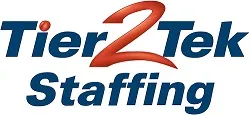Salesforce Developer Interview Q&A is a crucial resource for preparing to land your next role as a Salesforce Developer. Understanding key concepts like Apex programming, integration methods, and Salesforce architecture can help you stand out from the competition. Whether you’re looking to break into the field or advance your career, this guide provides essential Q&A to showcase your skills and technical expertise.
Common Salesforce Developer Interview Questions
- What is the role of a Salesforce Developer, and what skills are essential for success?
A Salesforce Developer is responsible for designing, coding, and implementing customized Salesforce applications that meet business needs. Key skills include proficiency in Apex, Visualforce, SOQL, and Salesforce Lightning, as well as knowledge of integration and debugging techniques. - How do you handle security and data access in Salesforce?
In Salesforce, security and data access are managed through a combination of profiles, roles, and sharing rules. Explain how you use these tools to control user permissions, data visibility, and field-level security within an organization. - What is the difference between Salesforce Lightning Components and Visualforce?
Lightning Components are a more modern, JavaScript-based framework used to build dynamic web applications for mobile and desktop devices. Visualforce, on the other hand, is an older framework used primarily for building custom user interfaces with server-side rendering. - How do you optimize Salesforce code to avoid hitting governor limits?
Optimizing Salesforce code involves using best practices such as bulkification (handling multiple records at once), reducing SOQL queries inside loops, and leveraging tools like batch Apex. Understanding these techniques helps avoid governor limits and ensures efficient code performance. - What are some methods for integrating Salesforce with external systems?
Discuss using REST and SOAP APIs, Apex callouts, or middleware platforms like MuleSoft for integration. Provide examples of when you’ve used these methods to connect Salesforce with other systems like ERPs or third-party applications. - How do you manage deployments and releases in Salesforce?
Talk about using tools like Change Sets, Salesforce CLI, or third-party solutions like Git for version control. Explain your experience in managing releases and how you ensure smooth transitions between different Salesforce environments. - What are common challenges Salesforce Developers face, and how do you overcome them?
Common challenges include managing governor limits, handling complex integrations, and optimizing performance. Discuss strategies you’ve used to address these challenges, such as using asynchronous processing or optimizing data models.
Ready to Find Top Salesforce Talent?
If you’re looking to hire experienced Salesforce Developers or want to explore more Salesforce Developer Interview Q&A to refine your hiring process, Tier2Tek is here to help. Get in touch with us today to connect with skilled professionals who can elevate your team and make a meaningful impact on your projects.
